Marine navigation has seen incredible advancements, and GPS technology has become the cornerstone for anyone journeying at sea. Whether you’re sailing for leisure or embarking on a fishing expedition, having a reliable GPS system is your best friend.
Before these high-tech tools became common, navigation was an art that required reading charts and relying on the stars. Since the advent of GPS, navigating vast waters has become significantly easier and safer, allowing even those new to boating to venture with confidence.
For beginners, understanding marine GPS systems might seem a bit daunting at first glance. But fear not, it’s all about gaining familiarity with the basics. A marine GPS isn’t just a gadget; it’s your guide, navigator, and safety net combined into one.
Engaging with marine GPS systems doesn’t have to be left to seasoned sailors. Beginners can quickly get the hang of it through practice and an effective understanding of the core functionalities. From plotting routes to tracking your journey, these systems offer a wealth of possibilities that extend beyond simple location tagging.
As you start your journey as a novice sailor, think of GPS as more than a tool — see it as a companion that has mapped the ocean long before you arrived, ready to share insights and guide you along your marine adventures. Every beginner can benefit from embracing how this technology transforms seafaring into an adventure filled with discovery.
Why Accessories Matter: Enhancing Your Marine GPS Experience
Adding accessories to your marine GPS setup isn’t just about looking trendy; it’s about maximizing the potential of your primary device. When you venture into the world of boating, these gadgets can be the difference between a mundane and a stellar experience at sea.
Accessorizing your GPS is akin to turbocharging your entire navigational setup. When properly selected, accessories can boost the functionality of your device, offering capabilities you never thought possible. Whether it’s enhancing the signal reception or making data more accessible, a good accessory lineup is your secret weapon.
Safety is paramount when you’re out on the water, and this is where the right accessories offer significant benefits. For instance, external antennas can improve reception in remote areas, while waterproof cases ensure your device remains operational in all weather conditions. Even something as simple as a screen protector can save your device from the wear and tear of marine environments.
When you’re just starting, understanding the relevance of these add-ons might not be instantly obvious. But think of these gizmos as essential components that complement and enhance your GPS, not as optional extras. They can transform your sailing experience, taking reliability and ease-of-use to a new level.
For any beginner, learning about and investing in the right accessories sets the foundation for better marine navigation. It’s about understanding your tools and how different elements can come together to build a more competent and enjoyable journey on the water.
The Top 10 Essential Marine GPS Accessories for Beginners
Selecting the right marine GPS accessories as a novice sailor can be overwhelming given the sheer variety available. However, having the right tools in your arsenal is crucial for enhancing your navigational experience and boosting your confidence on the water.
First on the list is the handheld GPS device. They’re compact, easy to use, and particularly useful for quick checks or if you need a backup to your primary system. These devices are especially handy when you’re away from the helm.
Next, consider an external GPS antenna. This can significantly boost your device’s signal reception, particularly in remote areas with weak coverage. It ensures your navigation data remains accurate and reliable.
A sturdy mount for your GPS is another essential. This keeps your device secure and easily accessible while you’re navigating. The right mount can be adjusted for optimal viewing angles in any condition.
Don’t forget a waterproof protective case. The marine environment can be harsh, and a waterproof case ensures your device is protected from splashes and adverse weather conditions.
Power cables and backup batteries are non-negotiable. Keeping your GPS powered throughout your trip is essential, and extra batteries ensure you aren’t left without crucial navigation capabilities at sea.
A screen protector is a small accessory that offers big benefits. It safeguards your screen against scratches and grime, keeping your display clear and easy to read, which is vital for safe navigation.
For hands-free efficiency, a GPS watch can be a game changer. These wearable devices offer quick access to critical navigational data without needing to handle your main GPS unit constantly.
Consider a chart plotter for more complex navigation needs. As you grow more comfortable on the water, this tool helps integrate different data sets, offering a comprehensive view of your surroundings.
Lastly, a VHF radio adapter can also be indispensable. It allows your GPS to communicate with other vessels and necessary emergency services, providing an added safety net.
Collectively, these ten tools form a comprehensive starter kit that ensures novices aren’t just prepared, but equipped to handle marine adventures with increasing expertise. As you gain experience, the benefits of each accessory will become apparent, making your journeys smoother and more enjoyable.
Detailed Guide to Essential Marine GPS Gear
Diving into the specifics of marine GPS accessories helps beginners understand which tools can genuinely elevate their experience. Every accessory we’ve talked about has unique features that cater to different needs, and knowing these details helps make informed choices.
Take the handheld GPS devices, for instance. They’re not just backups; they’re versatile tools for any mariner. They usually come with preloaded maps and a long battery life, making them perfect for both short trips and extended voyages where you might venture away from your main system.
External GPS antennas greatly enhance signal reception by broadening the GPS unit’s range. It’s like extending a friendly hand towards distant satellites, making sure your navigation remains uninterrupted in less populated waters. Attaching this to your setup is simple but yields significant increases in signal stability.
Sturdy mounts are more than just holding tools. They provide flexible viewing angles, are often vibration-resistant, and keep the device in place even when the sea gets choppy. It’s about making sure that when you need your GPS the most, it’s right there, clear and ready to guide you.
Waterproof protective cases act as a barrier against the sea’s unpredictability. Look for a case with additional features like UV resistance and shock absorption – they can turn a basic protective measure into a comprehensive defence against the worst the sea offers.
Power cables and backup batteries don’t just stop at providing power. Choose cables with long cords for greater reach and packs that are compact yet high-capacity, offering ample power reserves to make sure your GPS stays alive throughout the journey.
Screen protectors, though small, can make a big difference. Choose options that reduce glare and are easy to replace. When your screen’s clarity is unimpeded, navigation becomes less about squinting and more about intuitive reading.
GPS watches eliminate the need to leave the helm to check coordinates. With built-in sensors and sometimes even heart monitors, they offer insights well beyond navigation, like fitness tracking for the more adventurous sailor.
Chart plotters revolutionize navigation by integrating different data sources like sonar readings and temperature sensors. For those ready to take on more complex trips, these devices are invaluable, providing real-time data that’s critical for detailed route planning.
VHF radio adapters enhance your GPS’s connectivity by ensuring seamless communication, vital in emergencies or when coordinating with fellow mariners. This integration is about safety and preparedness, giving you peace of mind while exploring new waters.
Tailoring Your Marine GPS: Top Add-Ons and Features
When it comes to customizing your marine GPS setup, choosing the right add-ons and features can make all the difference. Tailoring your GPS ensures it meets your unique needs and matches your sailing style.
Start with map updates. Regularly updating your device with the latest maps means you have the most precise and up-to-date navigational data. This isn’t just about accuracy—it’s about exploring new routes with confidence.
Adding software upgrades can unlock new functionalities in your GPS that transform how you navigate. These updates might include enhanced route planning features or improved user interfaces that make interaction easier.
If you’re about safety, consider AIS integration. The Automatic Identification System can be linked to your GPS, giving you the ability to track nearby vessels, which is invaluable for avoiding collisions and ensuring safe passage through busy waters.
Another essential feature is the addition of weather overlay options. These allow you to receive critical weather updates directly on your GPS screen. Being aware of weather changes enables you to make timely decisions and avoid rough seas.
Then there’s sonar compatibility. For those who enjoy fishing or want detailed waterway data, sonar add-ons provide information on underwater topography, letting you navigate like a pro.
Adding customizable alarms for proximity alerts or depth warnings can keep you aware of surroundings and prevent potential grounding. This is about setting boundaries to keep your trip both safe and smooth.
Finally, personal preferences like screen customization help you create a display that’s easier to read and interact with. Fonts, color contrasts, and layout adjustments make navigation more intuitive, especially in varied lighting conditions.
Each of these custom add-ons brings a level of sophistication and comfort to the navigation experience, making your time at sea not just pleasant, but also exceptionally efficient. Exploring these options is part of becoming more seasoned, giving you the tools to make every voyage uniquely suited to your ambitions.
Crafting Your Marine GPS Starter Kit: A Comprehensive Checklist
Embarking on your maritime adventures requires assembling a marine GPS starter kit that’s well-suited to your needs. A comprehensive checklist ensures that you’re equipped with the essentials before hitting the water.
First up, assess your primary marine GPS device. Ensure it’s suitable for your activity level and compatible with any additional gear you might be considering. This is your main navigation tool, so it’s essential to get this right from the start.
Incorporate a reliable power source. You’ll need a combination of AC adapters, batteries, or solar chargers. These ensure your unit remains powered, regardless of how long you’re away or the weather conditions you encounter.
Invest in a robust carrying and storage solution. Whether it’s a watertight bag or a compartment in your boat, keeping your gear safe from the elements is critical. Look for something that offers both protection and easy access.
Add a troubleshooting guide tailored to your device. Being prepared means knowing how to resolve issues that might arise. Include the manufacturer’s manual and any supplementary guides you find online.
Include all necessary mounting equipment and brackets. This ensures your GPS system is securely fixed inside your vessel for optimal access and visibility.
Prepare for communication necessities with a VHF radio adapter if your GPS supports it. Staying in touch is crucial when you’re out on the open water, ensuring safety and connectivity throughout your journey.
Personalize your kit with regional maps, especially if you plan on exploring new areas. Having detailed charts at your fingertips prevents unnecessary detours, and makes navigating unfamiliar waters feel a breeze.
Finally, sprinkle in smaller essentials like screen protectors, extra cables, and a cleaning kit. Keeping your equipment in peak condition maintains its functionality and extends its lifespan.
With this checklist, you’re not just preparing for your immediate sailing needs. You’re setting up a framework that supports many successful voyages to come, equipping yourself with the tools and knowledge to handle whatever the open sea throws your way.
Maintaining and Upgrading Your Marine Navigation Accessories
Keeping your marine GPS accessories in good condition requires ongoing maintenance and knowing when upgrades are beneficial. This process ensures that your equipment remains reliable, enhancing your safety and efficiency on the water.
Start with regular equipment checks. Inspect your GPS and its accessories for any signs of wear and tear. Look for frayed cables, damaged connectors, or any corrosion, especially after exposure to saltwater. Early detection of issues can prevent larger problems in the future.
Storage plays a big role in longevity. Always store your devices and accessories in a dry, temperature-controlled environment. This helps prevent moisture damage and prolongs the life of your electronics.
Keeping software up to date is crucial. Manufacturers often release updates that improve functionality and security. Set reminders to check for firmware updates and apply them promptly to take advantage of the latest enhancements and bug fixes.
For devices with batteries, monitor their condition and replace when necessary. It’s often recommended to swap out batteries before they are completely drained to prevent any electronic memory loss or damage.
As technology advances, so do your options for upgrades. Keep an eye on new features and improvements in marine GPS technology, such as increased accuracy, faster processors, or better displays. Upgrading can significantly improve your navigation experience without requiring a complete overhaul of your system.
Don’t shy away from replacing accessories if they become outdated or inefficient. Sometimes, investing in new mounts or antennas can drastically enhance how well your system performs. These small changes can make navigation smoother and more intuitive.
Lastly, consider future-proofing your setup by choosing accessories compatible with potential upgrades. As new technology becomes available, you’ll want a system that’s adaptable, making transitions seamless and ensuring you’re always equipped with the best tools for your sailing adventures.
As an Amazon Associate I earn from qualifying purchases.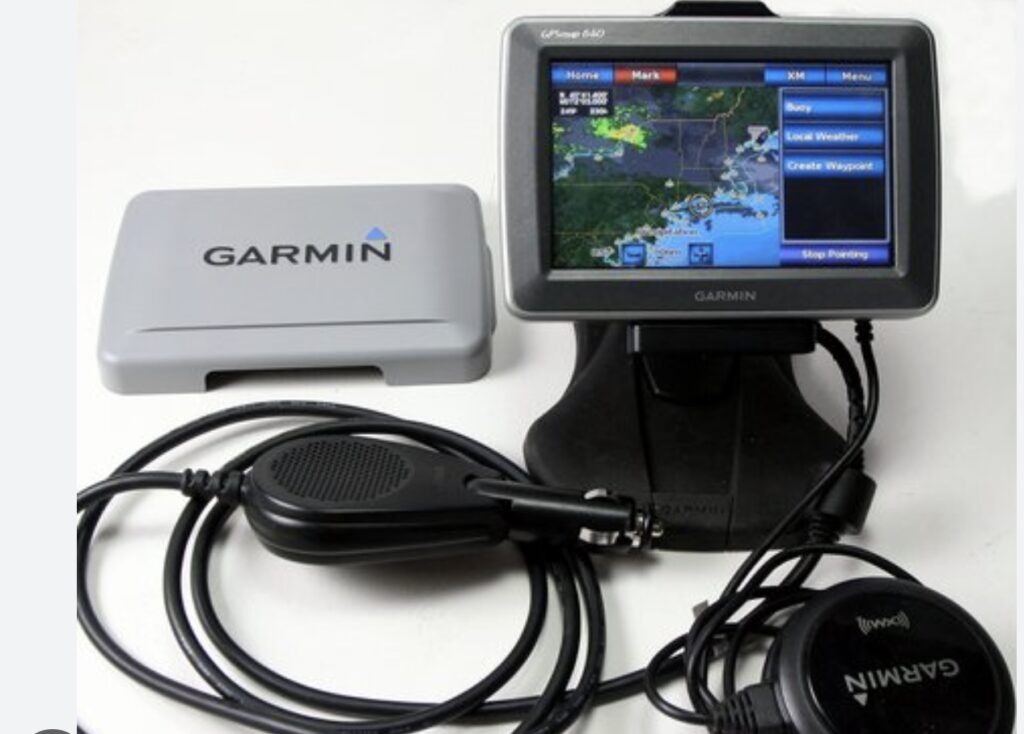
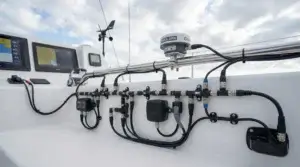
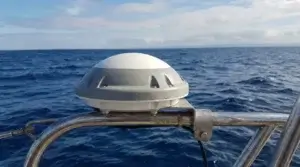
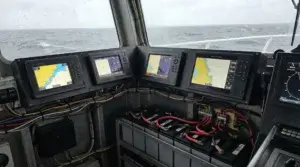
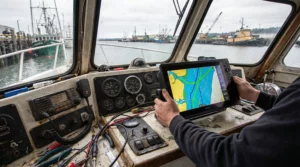
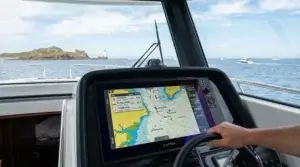
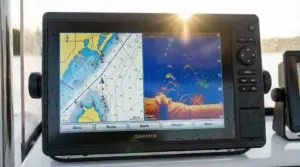

What a helpful roundup — thanks for putting this together! I especially like how you included both big-picture gear like chartplotters and the smaller but critical items like screen protectors and waterproof cases. It makes the list feel balanced for beginners who might otherwise overlook the little things. I’m curious though — when it comes to external antennas and VHF radio adapters, how would you recommend choosing between different models in terms of performance vs. cost?
Thanks so much — I’m glad you found the mix helpful! You’re absolutely right — the “little things” often make or break an installation, especially for folks new to marine electronics.
Regarding external antennas and VHF radio adapters, here’s how I’d approach weighing performance vs. cost (and some tips to guide your selection). Please review the post, as I’ve added some key factors to consider.